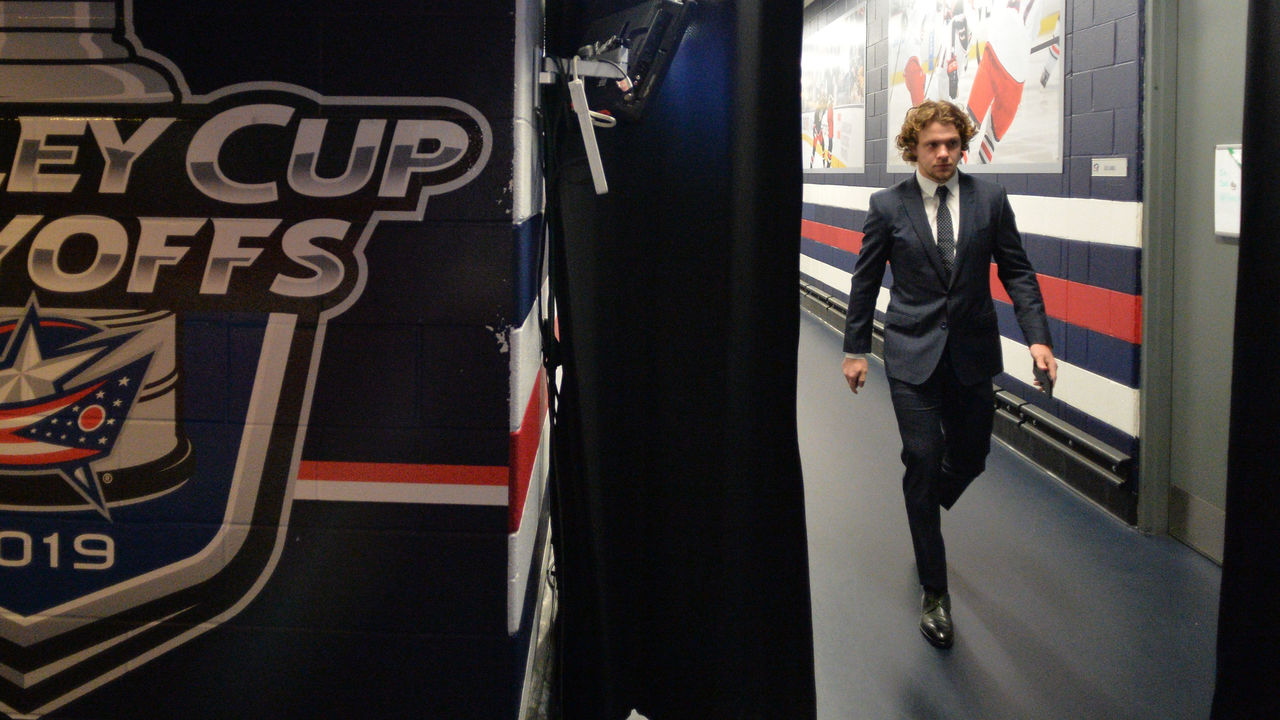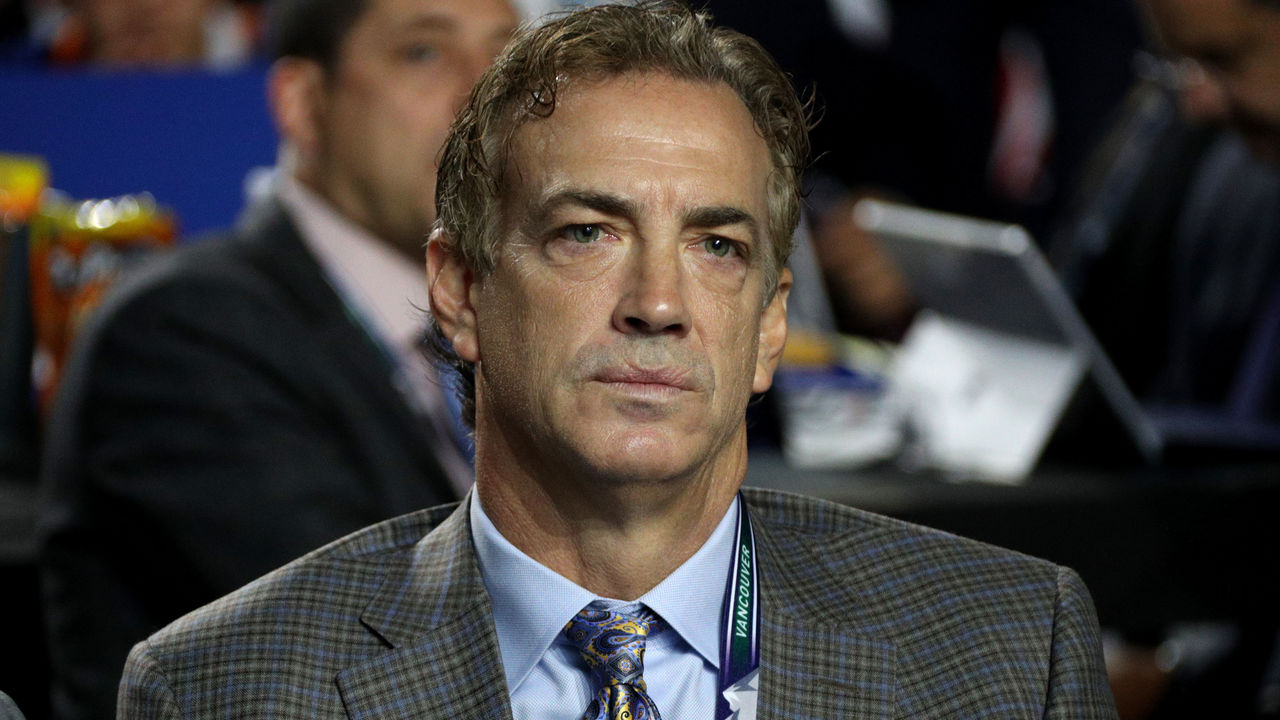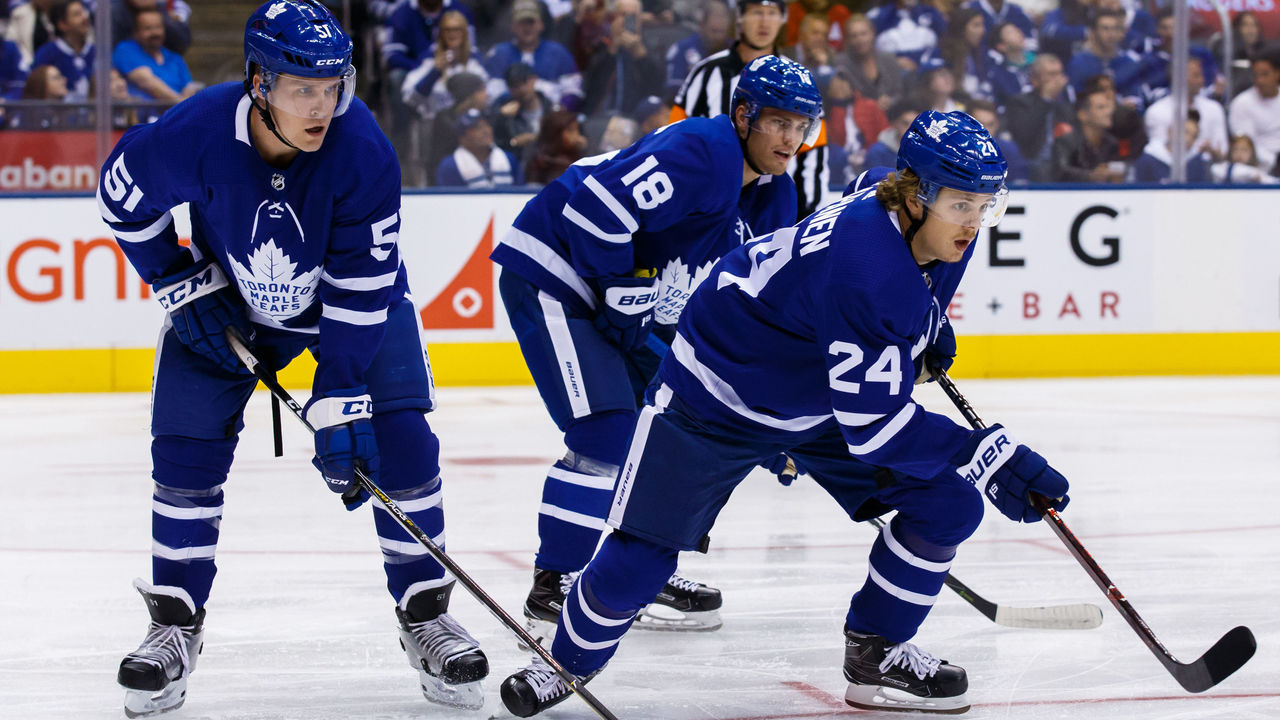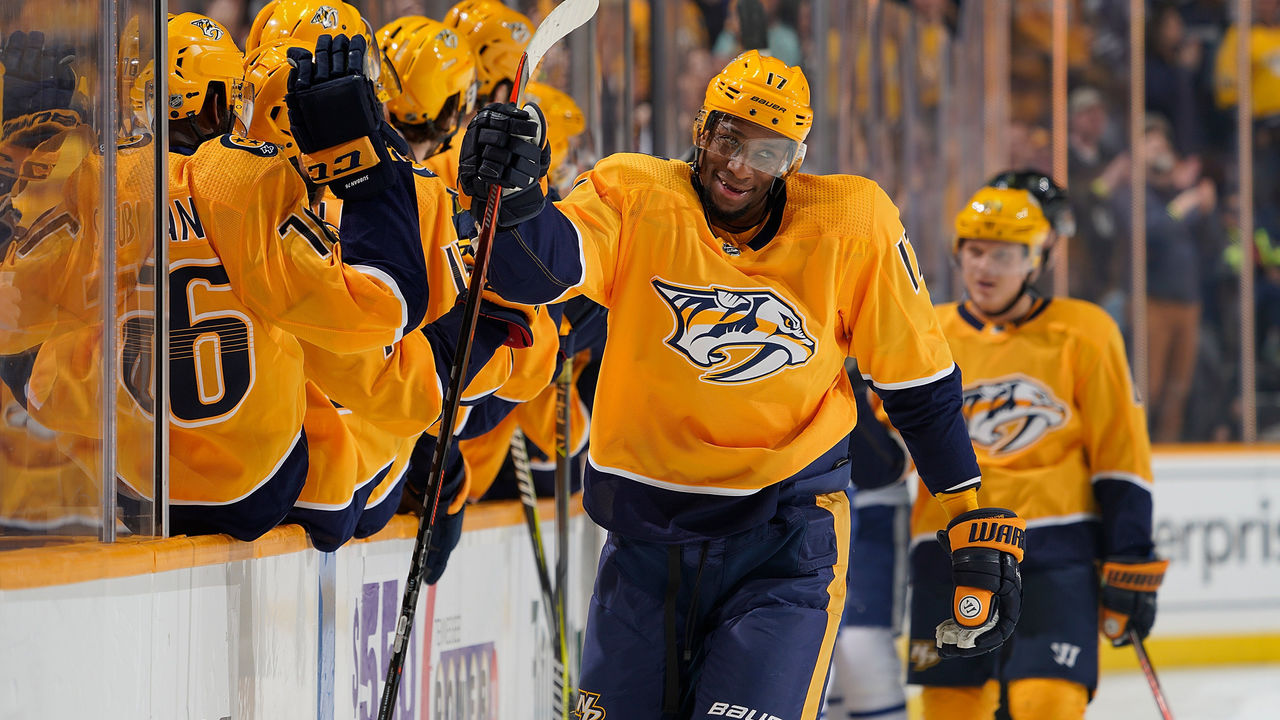The Metro, Avs, and Leafs: Reflecting on a busy week in the NHL
The first three days of July have come and gone, and the hockey world is left with more questions than answers in regard to offer sheets.
What did the Canadiens, who convinced star forward Sebastian Aho to sign an offer sheet Monday, actually accomplish aside from causing a minor stir in Carolina?
Will the reaction (the Hurricanes matching the five-year, $42.3-million deal with little hesitation) be chalked up as evidence that offer sheets aren’t effective in 2019?
Or, did Habs general manager Marc Bergevin simply play his cards wrong against Canes GM Don Waddell? Would a more lucrative deal of, say, $50 million over five years have changed the dynamic of the situation and have led to a precedent-setting outcome?
In the wake of a hectic week of transactions, there’s plenty to unpack beyond the muddy offer-sheet drama. NHL teams completed 11 trades over the past week, while the first three days of July produced 143 contracts, $732 million in future earnings, and 267 contract years, according to CapFriendly. Jake Gardiner, Marcus Johansson, and a small group of free agents may still be available, but the bulk of offseason activity has passed.
Now that the dust has settled, let’s reflect on the week’s biggest developments.
Metro Division disrupted in major way

You could argue that a team like the Central Division’s Stars or the Atlantic’s Panthers should be crowned the offseason’s biggest winner to date, but there are a handful of legitimate cases across the league. It's a toss-up.
In terms of pure chaos, though, the Metropolitan is the center of attention, hands down. It’s the one division that’s been rocked the hardest since the draft.
The Rangers’ rebuild hit fast forward with the landmark acquisition of Artemi Panarin; New Jersey added Wayne Simmonds a couple of weeks after the club scooped up Jack Hughes first overall and P.K. Subban via trade; the Flyers may have overpaid Kevin Hayes, but he will be a difference-maker; Carolina quietly picked up Erik Haula from Vegas and James Reimer from Florida.
In other words, the three Metro teams that missed last year’s playoffs, plus Carolina, who made it to the conference finals, have bulked up. As for the five playoff teams:
The Blue Jackets are worse after losing Panarin, Matt Duchene, Sergei Bobrovsky, and Ryan Dzingel. They did, however, sign Gustav Nyquist, and still look good on paper; although the Penguins shed Phil Kessel and gained Alex Galchenyuk and Brandon Tanev, the team can never be counted out until Sidney Crosby and Evgeni Malkin begin to fade; the Islanders missed out on Panarin and whiffed on a Robin Lehner extension, but snagged Semyon Varlamov and re-signed captain Anders Lee; Washington didn’t make any groundbreaking moves, but have much of their 2018 Stanley Cup lineup intact.
The Metro could easily send five teams to the 2020 playoffs, but it’s become difficult predicting who those teams might be.
Nobody in better shape than Avalanche

Take a glance around the NHL and think about how the landscape might look in five years. There isn't a franchise in better shape than the upstart Avalanche, especially if you trust GM Joe Sakic’s vision and consider the following information:
The core is extremely young. Nathan MacKinnon, Mikko Rantanen (RFA), J.T. Compher (RFA), Cale Makar, Samuel Girard, Conor Timmins, and Martin Kaut are all under 25 years old, while Gabriel Landeskog and Philipp Grubauer are 26 and 27, respectively.
Sakic’s addressed a lack of forward depth this offseason by adding a second-line center (Nazem Kadri), two middle-six wingers (Joonas Donskoi, RFA Andrei Burakovsky), and a fourth-line center (Pierre-Edouard Bellemare) through two trades and two signings.
Colorado boasts a league-high $27.2 million in cap space for the 2019-20 season. Not a single albatross contract is on the books.
There’s more talent coming down the pipe. Both Bowen Byram and Alex Newhook - picked fourth and 16th overall, respectively, in last month's draft - are highly touted, and in the next three drafts, the Avs own 20 selections, including all three first-rounders.
All of this is incredibly promising for an Avs team that, despite making the playoffs in consecutive seasons, is just getting started. Colorado is positioned to cleanly transition from playoff team to contender over the next couple of seasons. And by the tail end of MacKinnon’s contract, which expires after 2022-23, they could be a powerhouse. The future is blindingly bright.
Maple Leafs stickhandle out of trouble

With Mitch Marner negotiations ongoing, GM Kyle Dubas managed to turn over a chunk of Toronto’s 2018-19 roster in only a few days.
Departing are defensemen Gardiner (destination unknown), Nikita Zaitsev (Ottawa), Ron Hainsey (Ottawa), and Calle Rosen (Colorado), as well as forwards Connor Brown (Ottawa) and Kadri (Colorado). Arriving are defensemen Tyson Barrie (Colorado), Cody Cedi (Ottawa), Ben Harpur (Ottawa), and Kevin Gravel (UFA), as well as forwards Alex Kerfoot (Colorado), Jason Spezza (UFA), Nick Shore (UFA), and Kenny Agostino (UFA).
For those keeping score at home, that’s eight players in, six players out since July 1.
Rewinding to draft weekend in mid-June, Andreas Johnsson and Kasperi Kapanen signed extensions to get ahead of a potential offer-sheet conundrum, and Patrick Marleau left via trade to create cap space.
The only real stinger for the Leafs following all of these interconnected transactions is the loss of their 2020 first-round pick. Toronto's operating through a short-term lens and didn't have much choice but to ship out a first-rounder as they dance around the incoming $81.5-million salary cap.
Then on Thursday, Kerfoot and Ceci, both RFAs, signed four- and one-year deals, respectively, making Marner the lone player on the 23-man roster without a contract. Sure, Dubas could try to upgrade his No. 2 goalie in the leadup to training camp, but that takes a back seat to the Marner negotiations.
The young executive's salary-clearing work since the draft leaves the club with, after some LTIR and AHL assignments, roughly $9.5 million in cap space. Starting the 2019-20 season without a dark cloud hovering over the team obviously would be the ideal scenario. Perhaps a two-year bridge deal for Marner - something in the neighborhood of $9.5 million a season - works? If that's not enough for Marner's camp then Dubas isn't out of the woods yet.
Overall, it’s been an efficient offseason for the Leafs, an organization that's doubled down on its allegiance to skilled players. It's early in the process, but right now the Leafs' 18-man depth chart (not projected lines, as Marner remains unsigned, and Hyman and Dermott are injured) looks something like this:
| LW | C | RW | LD | RD |
|---|---|---|---|---|
| Johnsson | Matthews | Marner | Rielly | Barrie |
| Hyman | Tavares | Nylander | Muzzin | Ceci |
| Mikheyev | Kerfoot | Kapanen | Dermott | Holl |
| Moore | Spezza | Petan |
Handing out best/worst honors

Early July usually generates both tire-pumping and head-scratching signings. Below is a collection of the best and worst signings:
Best one-year deal - Devils netting Wayne Simmonds at $5 million. He’s slowing down and has battled injuries but could use the change of scenery, so this show-me deal makes sense for both parties.
Worst one-year deal - Blackhawks grabbing Robin Lehner at $5 million. Nice get but what if the Vezina Trophy finalist, who’ll be 28 in training camp, decides to walk away next summer?
Best contract now, and in the future - Sharks re-upping Timo Meier for four years on a $6-million cap hit. Already a stud at 22 years old, the Swiss power forward will easily turn this extension into a bargain.
Worst contract now, and in the future - Penguins forking over $3.5 million per season for six years to Brandon Tanev. A perfectly useful forward is now overpaid and overcommitted - good for player, bad for team.
Best reclamation project - Stars inking Corey Perry to a one-year deal at $1.5 million with $1.75 million in performance bonuses. The ex-Hart Trophy winner is incentivized to produce, and can help out the power play.
Worst reclamation project - Panthers devoting $5.5 million a season for three years and a modified no-trade clause to Anton Stralman. He’ll help that defense corps, but the package is a little rich for a 32-year-old suited for third-pairing work.
Best aligning of timelines - Rangers landing Artemi Panarin for seven years at $11.6 million annually. He's the perfect poster boy for New York's burgeoning core, which now includes Kaapo Kakko, Adam Fox, and Jacob Trouba.
Worst aligning of timelines - Wild signing Mats Zuccarello to a five-year, $30-million deal. Weird fit, since the soon-to-be 32-year-old is a player who should be the final piece to the puzzle, and Minnesota's not exactly close to contending for a Stanley Cup.
Best big splash - Predators snagging Matt Duchene for seven years and $8 million per season. It cost the team P.K. Subban, which sucks, but the price tag is reasonable for the best center on the UFA market.
Worst big splash - Canucks acquiring Tyler Myers for five years at $6 million per season. The former Calder Trophy winner solidifies the back end, yet the length and AAV are far too generous for his talent level.
John Matisz is theScore's national hockey writer.
HEADLINES
- Gauthier leads Ducks past Rangers in return of Kreider, Trouba to MSG
- Stars' DeSmith continues hot streak in win as Kings lose Kuemper to injury
- Bedard out until at least early January with upper-body injury
- Sabres fire Kevyn Adams, promote Kekalainen to GM
- Reinhart scores twice to lead Panthers over Lightning